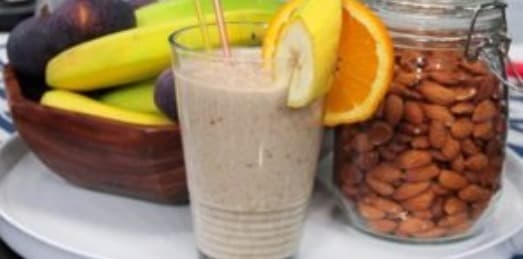Buttercream (also known as butter cream, butter icing, and mock cream) is a type of icing or filling used inside cakes, as a coating, and as decoration. In its simplest form, it is made by creaming butter with powdered sugar, although other fats can be used, such as margarine or lard. Colorings and flavorings are often added, such as chocolate, fruit purees, and various extracts. Buttercream is a common topping for cupcakes, sponge cakes, butter cakes, and other desserts.
Whether buttercream with no butter or a butter equivalent can rightly be called buttercream is debated among bakers, pastry chefs, and cake decorators.
Simple buttercream
Simple buttercream (also known as American buttercream, decorator’s buttercream, and decorator’s frosting) is made by creaming together fats (butter, margarine, or vegetable oil shortening) and powdered sugar to the desired consistency and lightness. Typically twice as much sugar as butter by weight is used. Flavorings, in the form of extracts and oils, may also be added. Some recipes call for non-fat milk solids or meringue powder; these add a creamy texture without any decrease in stability.
The icing can form a thin crust after prolonged time at a cool temperature, which prevents sticking. This is due to the high sugar content and may be prevented with the addition of invert sugars such as glucose or fructose, which many bakers use to make imprints in for piping and lettering. Compared to other types of buttercreams, simple buttercream has a high proportion of sugar content, making it the sweetest of all the buttercreams.
Meringue-based buttercream
A wedding cake prepared with Swiss meringue buttercream filling and other ingredients
There are two types of meringue-based buttercream: Italian and Swiss. The meringues must be cooled to room temperature in order not to melt the butter (which has a variable melting point below 40 °C (104 °F))[1] as it is subsequently beaten in.
Italian meringue is prepared by the addition of sugar syrup made by heating sugar and water (and sometimes the addition of glucose or corn syrup to stabilize the crystal structure) heated to the soft-ball stage (118 °C (244 °F)) to egg whites whipped to soft peaks. The sugar syrup cooks the egg whites, heating them well past the 60 °C (140 °F) recommended in the USA to kill salmonella and any other potentially harmful bacteria. The syrup and egg white mixture is then whipped and cooled until it reaches room temperature.[2] Buttercream prepared in this method is also often referred to as Mousseline buttercream.[3]
Swiss Meringue is prepared by cooking the egg whites and sugar together in a bowl placed on a pot of boiling water. The mixture is whisked while it cooks until the temperature of the mix reaches 60 °C (140 °F). The mixture is then removed from the heat and whipped at high speed until it forms stiff peaks and has cooled.
No matter which of the two types of meringue are used as the base, once it is prepared, butter and flavorings (extracts or oils) are then beaten into the meringue to transform the meringue into buttercream. Meringue-based buttercreams are light and creamy in texture and balanced between sweetness and richness. They are also the easiest to work with when icing and decorating cakes. They also don’t ‘crust over’ as with simple buttercream.
French buttercream, pâte à bombe based buttercream, or common buttercream
French buttercream is made with whipped egg yolks not French meringue as is sometimes assumed. It is prepared in the same way as Italian meringue-based buttercream, except egg yolks (some versions use whole eggs or a combination of the two) are used in place of the egg whites—a hot sugar syrup which has reached the soft-ball stage is beaten into the egg yolks which have been beaten until they are thick and pale yellow. The syrup and egg yolk mixture is further whipped until it has formed a light foam and has cooled. Butter and flavorings (extracts, oils, or juices) are then whipped in. This icing is very rich, smooth, and light. French buttercream tends to melt faster than other buttercreams due to the high content of fat from the egg yolks and butter. This type of buttercream is best suited for use as a filling or an icing, but not for decorations.
Custard-based buttercream
Custard-based buttercream (also known as German buttercream, light buttercream, crème mousseline, and Bavarian buttercream) is prepared by beating together a thick type of custard called pastry cream and softened butter, and may be additionally sweetened with extra confectioners’ sugar. Like French buttercream, this icing is very rich and smooth and is best suited for use as a filling or an icing, but not for decorations. A less rich yet still smooth version is made by using egg less, cornstarch based imitation custard using custard powder; this version is suitable for basic decorations when piped.
Rolled buttercream
Most often used for icing sugar cookies, rolled buttercream is prepared by mixing together a large amount of powdered sugar with vegetable shortening, glucose, or corn syrup, and flavorings (extracts and oils). So much powdered sugar is needed that it cannot all be incorporated using a spoon or mixer and must be kneaded in. Once all of the ingredients are combined, an icing dough is formed that can be rolled out and cut into shapes. Rolled buttercream is similar to fondant, but with a softer texture and less elasticity, it cannot be rolled as thin and so is not good for covering cakes or molding flowers or figures.
To Find Out All The Yummy Ingredients And The Step By Step Directions To Follow for this Delicious recipes, Go to the next page.








No comments yet
Leave a Reply
Your email address will not be published. Required fields are marked *